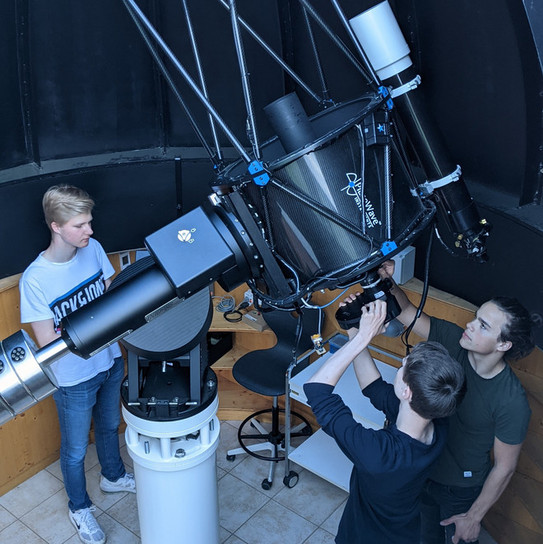International research team finds kink in the plasma flow
- News
- Research

Active galactic nuclei are among the most luminous objects in the universe. They are extremely bright central regions of galaxies that can be observed from great distances. Their brightness usually results from the processes around a black hole, towards which matter from the surroundings rushes. Sometimes plasma streams of charged particles, so-called jets, are formed in the process. Astrophysicists study active galactic nuclei and their jets because they suspect that these particles can accelerate enormously and reach much higher energies than the largest particle accelerators on Earth.
Kink in the plasma stream causes brightness fluctuations
A subclass of active galactic nuclei are the so-called "blazars". One well-known blazar is called "BL Lacertae": This galaxy, about 900 million light years away, hosts a black hole with a mass 170 million times greater than that of our Sun. When analysing data from a particular burst of brightness from BL Lacertae in 2020, astronomers noticed that the brightness fluctuated at an unusually regular rate. The researchers were able to explain these quasi-periodic oscillations with a change in the jet's plasma, a so-called kink instability, which influences the magnetic field. The visible fluctuations in brightness occur because the high-energy particles in the jet move through precisely this kink.
"The kink-in stability is of great importance for the study of plasmas. The discovery in the jet of BL Lacertae now provides completely new insights into this cosmic particle accelerator," says Dr. Dominik Elsässer. For this reason, the work was selected for publication by the renowned journal Nature. The publication was produced as part of the Whole Earth Blazar Telescope project, an international consortium of astronomers who specifically monitor blazars.
Students monitor brightness of active galactic nuclei
Part of the data that led to the current Nature publication comes from a cooperation project between the Friedrich-Koenig-Gymnasium in Würzburg, the Department of Astronomy at the University of Würzburg and the Department of Physics at TU Dortmund University. The brightness of active galactic nuclei has been monitored in a school laboratory for ten years. The pupils carry out the measurements independently on more than 100 nights per year and also evaluate the data independently. Prof. Karl Mannheim from the University of Würzburg and Dr. Dominik Elsässer from TU Dortmund University are the scientific directors of the project.

Contact for queries:









